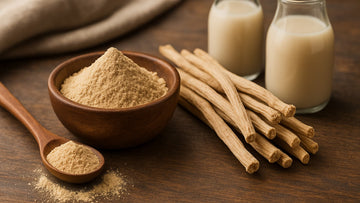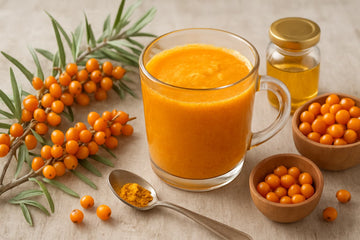Pine nuts, also known as pine nuts or pignoli, are edible seeds harvested from various species of pine trees. These seeds are nestled within pine cones, which bear a striking resemblance to the pine cones harvested for timber production. Extracting and preparing these kernels can be a labor-intensive and costly process, which contributes to the relatively high prices at which pine nuts are sold. However, their culinary versatility and nutritional value make them a highly sought-after ingredient.

Pine Nuts Through the Ages
Pine nuts have a rich and storied history, serving as an essential food source for humans for thousands of years. The use of pine nuts in various cuisines and cultures can be traced back to ancient times. For instance, Roman soldiers included pine nuts in their provisions during campaigns when they invaded Britain over 2,000 years ago. Even before this, Greek authors mentioned pine nut trees as producers of food around 300 BC. It is believed that earlier societies utilized pine nuts and may have transplanted these trees throughout the Mediterranean region, including locations such as Israel, Georgia, and the Black Sea, between 6,000 and 10,000 years ago.
Pine nuts have also played a significant role in the history of global trade. Over the years, multiple pine species have been identified as suitable for human consumption, with as many as eighteen species being used as food. These species grow in diverse regions across North America, Europe, and Asia.
The Notable Pine Nut Species
While numerous pine species have been historically consumed by humans, a smaller group of species has survived the transition from hunter-gatherer and local farming societies to the modern world of global trade. Some of the most significant pine nut species include:
- Chinese Pine Nuts (Pinus koraiensis): These pine nuts are the primary source of pine nuts in many parts of the world, such as New Zealand, Australia, and beyond. They have a distinctive shorter triangular or teardrop shape and are sourced from various regions, including northeast China, southeast Russia, the Korean Peninsula, and Japan.
- European Stone Pine Nuts (Pinus pinea): Preferred in Europe for their superior quality, these pine nuts are synonymous with Mediterranean cuisine. They are sourced from countries like Spain, Italy, southern France, Greece, the Middle East, Turkey, and North Africa. European stone pine nuts have a longer, torpedo-like shape.
- Siberian Pine Nuts (Pinus sibirica): Revered in Siberia for their health benefits and esteemed as a food of high status, these pine nuts are relatively small and round. They sometimes find their way into the larger supply of Chinese nuts and can be found in Western supermarkets.
- Himalayan or Chilgoza Pine Nuts (Pinus gerardiana): These pine nuts are longer and more slender than those of other species. They are harvested from forests in Afghanistan, Pakistan, and parts of northern India and are used locally and sometimes available in markets in Europe and other parts of Asia.
- Pinon or Pinyon Pine Nuts (Pinus edulis, Pinus monophylla): Historically important for native American tribes in the southwest, these medium-sized nuts are often sold in the shell, making them easier to crack.
- Mexican Pine Nuts: Mexico boasts a wide array of pine species, with some producing unique edible nuts, including pink pine nuts and the world's largest pine nuts (Pinus maximartinezii). However, the latter is a very rare tree and is fully protected.
- California Pine Nuts: California is home to three pine species, including Pinus coulteri, Pinus sabiniana, and Pinus torreyana. While historically significant for Native American tribes, these pine nuts are not prevalent in modern commerce due to the scattered distribution of trees and high harvesting costs.
- Swiss Nut Pine (Pinus cembra): Found in the mountains of central Europe, these pine nuts have purple cones with tan-colored nuts. Italian traditions include using nut shells to flavor and colour local grappa.
- St. David's Pine (Pinus armandii): Highly regarded in South West China, this species produces small, round-shaped pine nuts.
Of these, European stone pine nuts stand out for their unique feature: they take a full three years to mature on the tree, which is the longest maturation period of any pine species. Every year, during the growing season, a few cells in the buds at the very tips of the crown differentiate as cone-producing cells. These cones fill out to the size of a small plum, eventually turning from bright lime green to purple-nut brown. These fully mature cones are ready for harvest during the late winter or spring of their third year, right before summer conditions dry out the cones, causing them to shed their seeds. While these trees produce new cones annually, approximately every third year is a particularly heavy cone season, known as a mast year.
Nutritional Value of Pine Nuts
Pine nuts are more than just a delightful addition to various dishes; they are a powerhouse of nutrition. These small kernels are rich in the type of healthy fats that are now recognized as essential in a balanced diet. The fatty acids found in pine nuts, including linoleic acid and pinolenic acid, have been subjects of research to understand their potential roles in regulating blood pressure, suppressing appetite for weight management, and preventing and treating stomach ulcers.
Surprisingly, pine nuts are also a good source of protein. Some studies have discovered at least trace amounts of all 28 amino acids required for human metabolism. Among nut pines, European stone pine nuts lead the way with the highest protein content at 34% by weight. Despite their protein content, pine nuts have a lower oil content compared to other varieties, with European stone pine nuts containing 48% oil, in contrast to Chinese-sourced nuts, which contain 65% oil.
Pine nuts are also packed with antioxidants, including vitamins A, B, C, D, E, and K, as well as lutein. These antioxidants are believed to combat diseases and aging by eliminating harmful free radicals. Furthermore, pine nuts are low in sodium and contain valuable minerals such as calcium, magnesium, potassium, phosphorus, and iron. They also offer moderate amounts of dietary fiber, contributing to their overall nutritional value.
Pine Nut Allergies
Pine nut allergies are relatively rare compared to allergies to more common nuts like almonds, walnuts, and peanuts. Several factors contribute to the rarity of pine nut allergies, including limited exposure and the unique characteristics of pine nuts. Here's a more in-depth look at pine nut allergies:
- Limited Exposure: Pine nuts are less widely consumed than other nuts, which means that fewer people have been exposed to them. As a result, fewer individuals have encountered pine nuts and developed allergies to them. Allergies often arise when the immune system mistakes a harmless substance as a threat, triggering an allergic reaction upon subsequent exposure.
- Specific Species Allergies: While pine nuts come from various pine species, it's possible for someone to be allergic to one species of pine nut while not reacting to another. This is because different pine species may produce nuts with varying compositions. For example, someone may be allergic to pine nuts from a specific geographic region or a particular species, while they may tolerate pine nuts from another source without any issues.
- Cross-Contamination Risk: Cross-contamination can occur during the harvesting and processing of pine nuts. The same equipment and facilities that handle pine nuts may also process other types of tree nuts or ground nuts. This creates a risk for individuals with nut allergies. Even trace amounts of allergenic proteins from other nuts can lead to allergic reactions in susceptible individuals.
Precautions for Individuals with Nut Allergies
For individuals who have reason to suspect they might have nut allergies, especially if they are known to have allergies to other tree nuts or peanuts, taking caution when trying pine nuts is highly recommended. Here are some important precautions to consider:
- Consult an Allergist: If you have a known nut allergy or suspect that you might be allergic to nuts, consult an allergist. Allergists are medical professionals who specialize in diagnosing and managing allergies. They can conduct allergy tests, such as skin prick tests or blood tests, to determine if you are allergic to pine nuts or other nuts.
- Start with Small Quantities: If you receive a green light from your allergist to try pine nuts, it's advisable to start with very small quantities. This can help you gauge your body's response and identify any potential allergic reactions.
- Observe for Allergic Reactions: After consuming pine nuts, closely monitor your body for any signs of an allergic reaction. Symptoms may include hives, itching, swelling, difficulty breathing, gastrointestinal issues, or anaphylaxis, a severe and life-threatening allergic reaction that requires immediate medical attention.
- Source from Trusted Suppliers: To minimize the risk of cross-contamination, ensure that the pine nuts you consume come from trusted and reputable suppliers. These suppliers should follow stringent food safety practices and maintain facilities that are free from allergen cross-contact.
- Emergency Plan: If you have a known nut allergy, always carry an epinephrine auto-injector (e.g., an EpiPen) with you. This device can provide life-saving treatment in the event of a severe allergic reaction. Make sure you and those around you know how to use it.
- Seek Medical Attention: If you experience any symptoms of an allergic reaction, seek immediate medical attention. Allergic reactions can escalate rapidly, and prompt treatment is crucial.
It's important to emphasize that individuals with nut allergies should only try pine nuts or any other nuts with proper medical guidance and allergy testing. Allergic reactions can range from mild to severe, and the consequences can be life-threatening. Therefore, a cautious and informed approach is essential for those with nut allergies who wish to explore new foods.

Pine Mouth: Unravelling the Mystery
A peculiar phenomenon associated with pine nuts is known as "pine mouth." Some individuals who consume pine nuts have reported developing a strong bitter or metallic taste sensation in their mouths hours or even days after eating the nuts. This condition is technically called "dysgeusia." In severe cases, the altered taste sensation can persist for up to two weeks, making it challenging for sufferers to consume other foods.
Intriguingly, studies conducted by scientists at the Nestle Research Centre and the Belgian Poison Control Centre have identified one species of pine nut, Armand or St. David's pine (P. armandii) from South West China, as the cause of pine mouth. This particular species of pine nut, which possesses a distinctive taste, can lead to unusual taste disturbance when consumed.
The enigma of pine mouth lies in the fact that the taste alteration seems to be triggered when a naturally occurring chemical in Armand pine nuts is absorbed in the lower digestive system, not in the mouth itself. Sufferers often report enjoying the pine nuts initially and only experiencing the taste problems hours or days later. This unique phenomenon has prompted further research into the neural pathways that connect the digestive system to the brain and the sense of taste in the mouth. Scientists aim to gain a deeper understanding of how our food metabolism functions.
Fortunately, pine mouth, while distressing, does not appear to have any other adverse effects on human health. In the most severe cases, individuals may lose some weight due to their inability to eat other foods. However, there are no known toxic or debilitating effects of the syndrome, and all sufferers typically recover completely after a period ranging from hours to a few weeks at the longest.
It's important to note that there is zero risk of developing pine mouth from consuming Pinoli Premium Pine Nuts. This is because all of their product is sourced exclusively from the European Stone Pine (P. pinea). To avoid pine mouth and ensure a safe and enjoyable pine nut experience, it is advisable to choose pine nuts from trusted sources and be aware of the specific species used.
Pine Nuts in Modern Cuisine
Buy Pine nuts online in India as they continue to play a significant role in modern cuisine, where their mild, nutty flavor and versatility make them a popular choice for both sweet and savory dishes. Some common uses of pine nuts in contemporary cooking include:
1. Pesto Sauce: Pine nuts are a key ingredient in traditional pesto sauce, which includes basil, garlic, olive oil, Parmesan cheese, and pine nuts. The creamy texture and subtly nutty flavour of pine nuts add depth to this classic Italian sauce.
2. Salads: Pine nuts are often used to garnish salads, providing a crunchy texture and nutty taste. They pair well with a variety of greens and other salad ingredients.
3. Desserts: In desserts pine nuts can be found in pastries, cakes, and cookies. Their delicate flavor compliments sweet treats.
4. Stuffings: Pine nuts are commonly used in stuffings for dishes like roasted meats, poultry, and vegetables, contributing a rich, nutty taste to the filling.
5. Mediterranean and Middle Eastern Dishes: Pine nuts are frequently featured in Mediterranean and Middle Eastern cuisine. They are used in dishes like couscous, pilaf, and baklava, enhancing the overall flavor.
6. Nut Butter and Spreads: Pine nuts can be ground to make pine nut butter, which can be used as a spread or as a base for sauces and dips.
7. Pine Nut Crusted Fish or Chicken: Pine nuts can be used as a crust for fish or chicken, adding a delightful crunchy texture and a burst of flavor.
As global trade and culinary exploration continue to expand, pine nuts remain an essential ingredient cherished for their unique characteristics. They are valued not only for their taste but also for their nutritional benefits.
Pine Nuts: A Gourmet Experience
Pine nuts have established themselves as a gourmet ingredient, adored for their distinctive taste, versatility, and rich history. While they may come with a premium price tag, their unique attributes make them a sought-after addition to various dishes worldwide. From ancient times to modern kitchens, pine nuts have proven to be more than just a culinary delight – they are a gateway to the past, a source of nutrition, and a subject of scientific fascination. Whether you are enjoying the creamy, subtle flavor of pine nuts in a salad or savouring their rich, nutty notes in a pesto sauce, these tiny kernels continue to leave an indelible mark on global cuisine.
In conclusion, pine nuts are not just a gastronomic delight but a small wonder of nature that offers unique flavors and invaluable nutrition. They have stood the test of time and continue to be celebrated in kitchens around the world, from Rome to Beijing and beyond. To find the most affordable chilgoza price in India, remember to check out the website of My Pahadi Dukan today.










